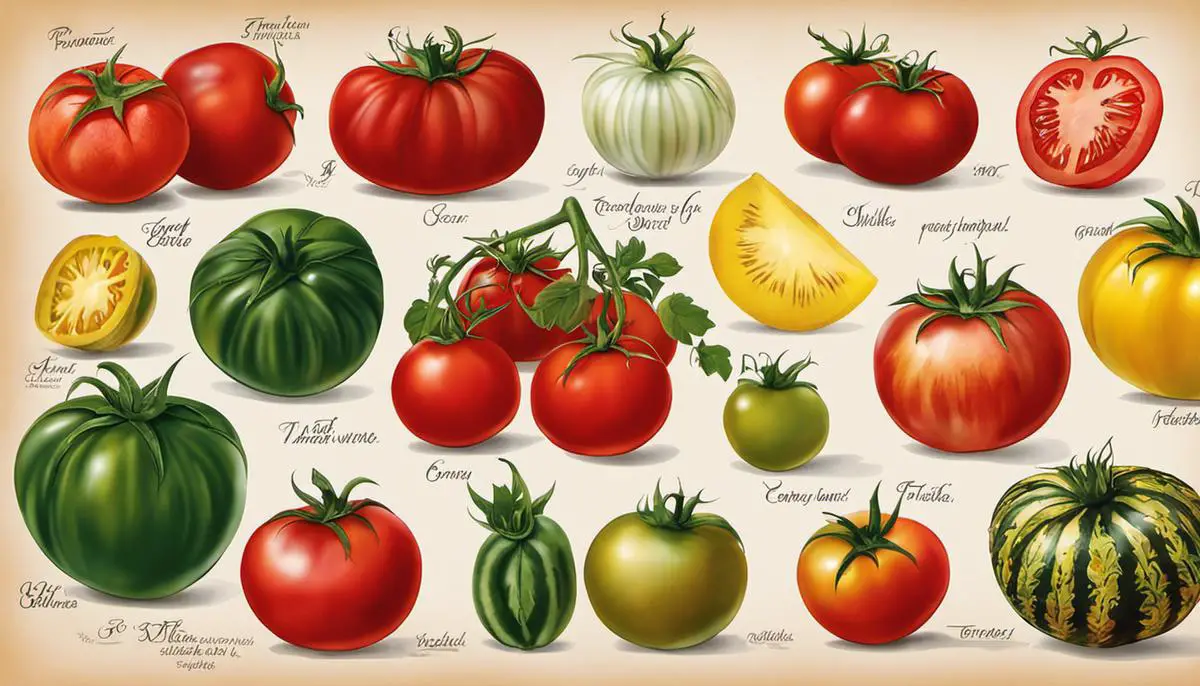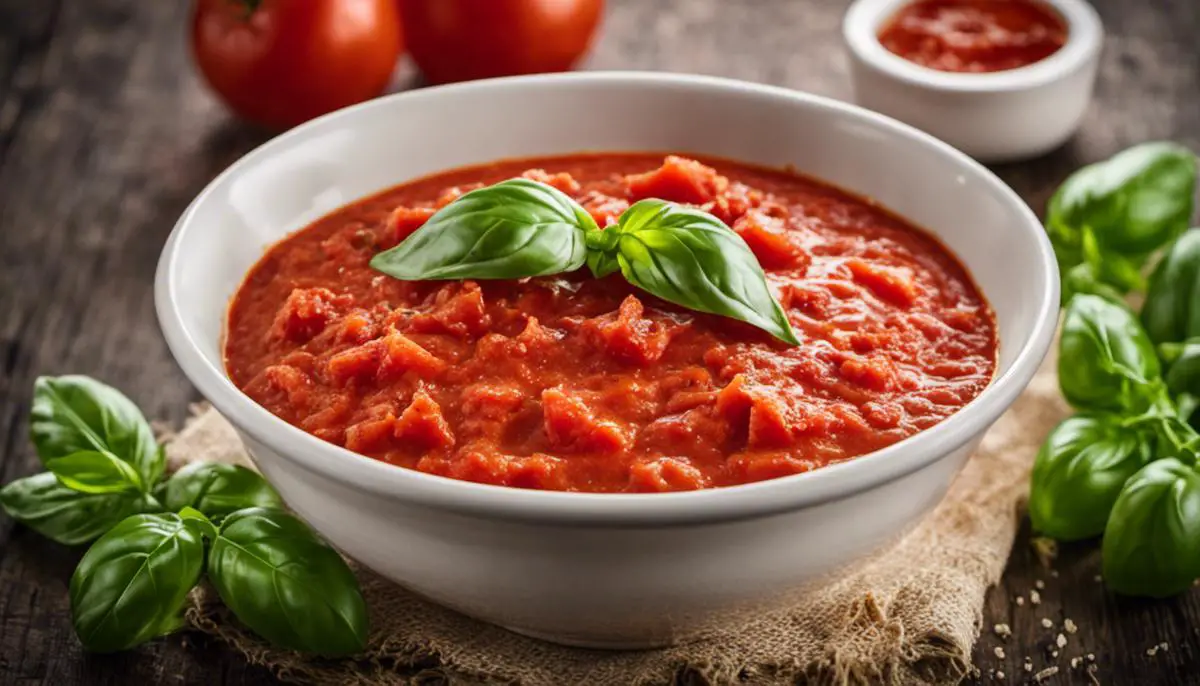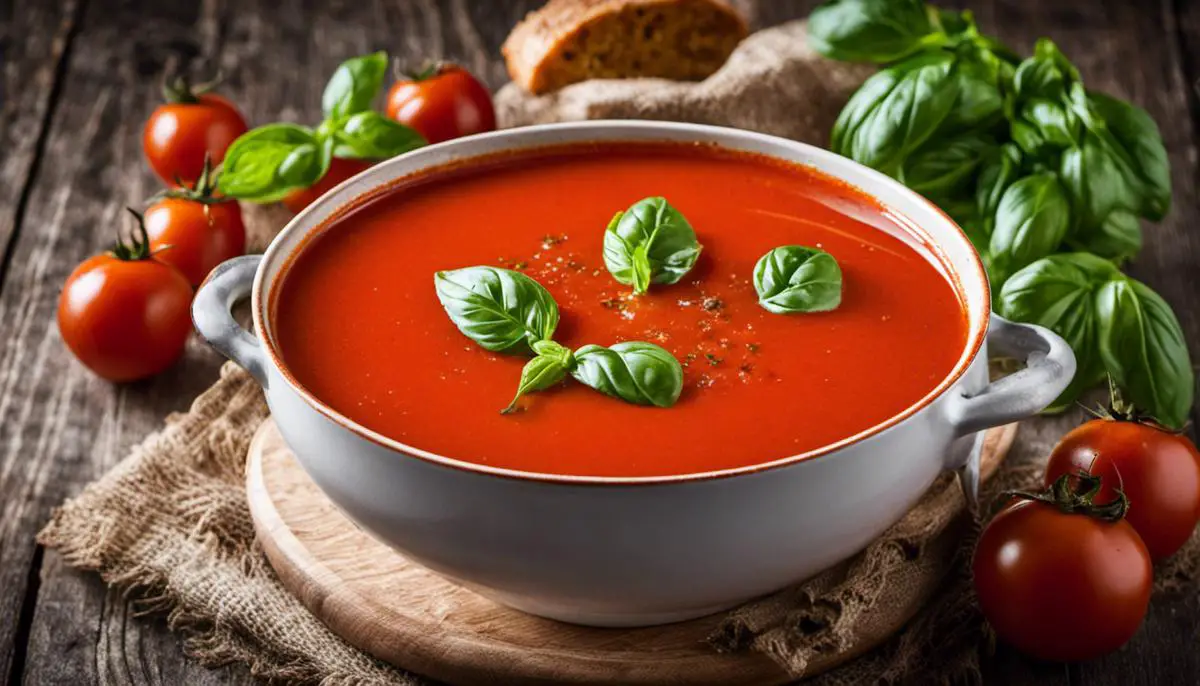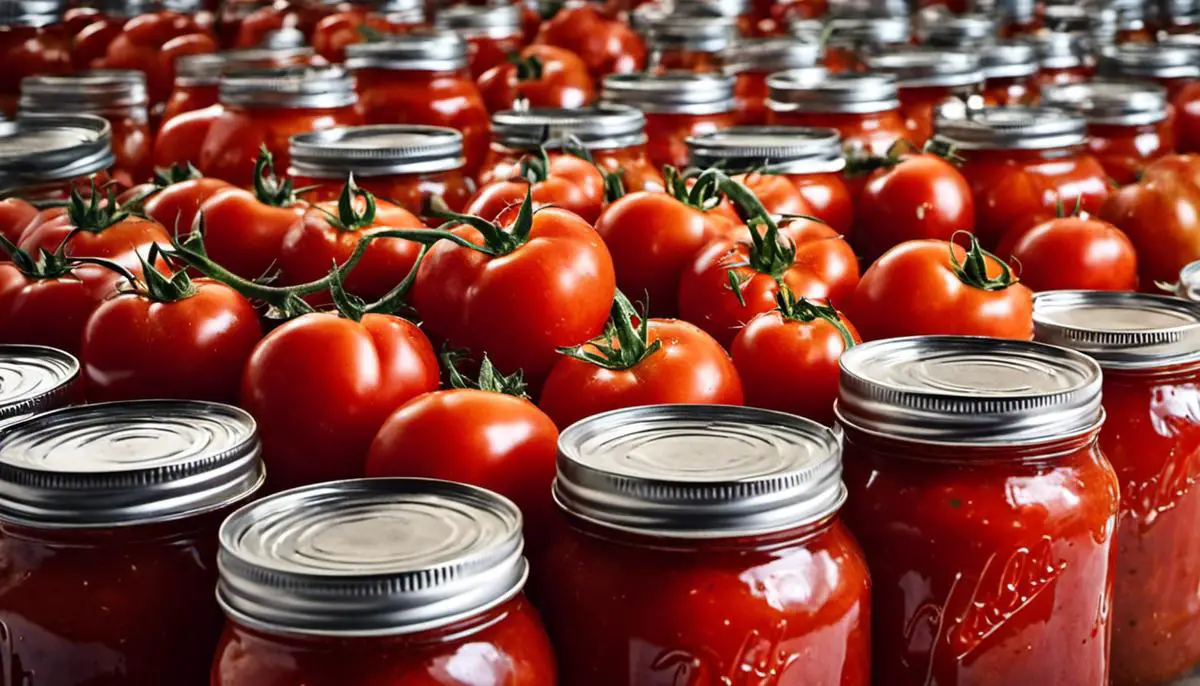Table of Contents
Tomatoes are an incredible ingredient with a wide array of uses in the kitchen. Their rich flavor profile can elevate the simplest of dishes and provides a foundation for a plethora of culinary creations. With a bounty of different types to explore, understanding their unique qualities and tastes can instigate a culinary adventure. Whether you’re seeking to get the hang of basic tomato recipes or push your gastronomic boundaries with advanced recipes, there’s always something to learn and enjoy. Moreover, becoming skilled in various preservation methods can ensure that you appreciate the delightful goodness of tomatoes all throughout the year, no matter the season.
Types of tomatoes
Identifying Different Types of Tomatoes
One of the most popular kinds of tomatoes is the Beefsteak tomato. This variety is large in size and has a juicy, meaty texture, making it ideal for sandwiches or any recipe that requires a hearty tomato. Its taste is well-balanced, not too tangy or sweet, which suits most culinary applications.
Roma tomatoes, also known as plum tomatoes, are another common variety. They are elongated, firm, and contain fewer seeds than other varieties, making them perfect for creating sauces or pastes. Its robust flavor often leans more towards the tangy side.
Exploring Unique Tomato Varieties
The Cherry tomato is a tiny, round variety known for its sweet, juicy character. They make an excellent addition to salads, pasta, and roasted dishes – or eaten as is for a quick, healthy snack.
Heirloom tomatoes are a unique variety that comes in a multitude of flavors, sizes, colors, and shapes. The Brandywine, for example, is a type of Heirloom tomato that has a uniquely sweet, yet tangy taste, and is often touted as one of the best-tasting tomatoes around. Another type, the Green Zebra, boasts a zingy, slightly tart flavor.
Unusual Tomatoes: For the Adventurous Cook
For those looking for a unique culinary experience, the Black Krim tomato is a good starting point. This heirloom variety from Russia has a rich, slightly salty flavor. Its dark, almost purple skin makes it a conversation starter in salads or sandwiches.
Another unusual breed is the Pineapple tomato, a yellow and red-striped fruit. It offers a surprising burst of extremely sweet, fruity flavor, with a hint of aromatic citrus. It’s quite large and meaty, making it a great candidate for stuffing.
By understanding the myriad options that different tomatoes offer in terms of taste and texture, one can make an informed selection best suited to their cooking needs.

Basic Tomato Recipes
Fresh Tomato Sauce
To make a fresh tomato sauce, start by gathering your ingredients: 10 ripe tomatoes, 3 cloves of garlic, a handful of fresh basil leaves, salt, and olive oil. Begin by blanching the tomatoes in boiling water for a minute until the skin starts to split, then rinse under cold water and peel the skin off. Cut into quarters, remove the seeds, and finely chop. Finely chop the garlic and basil leaves as well. Now, warm a generous pour of olive oil in a saucepan over medium heat, then add the garlic and cook until it’s fragrant. Add the chopped tomatoes, a big pinch of salt, and half of the chopped basil. Let this simmer for about 30 minutes until it thickens into a sauce. You can leave it chunky, or use an immersion blender to puree it into a smoother sauce. Before serving, season with additional salt if needed and stir in the remaining fresh basil.
Tomato Salad
A simple tomato salad can be a refreshing and nutritious meal. For the salad, you will need 4 ripe tomatoes, 1 red onion, a handful of fresh basil leaves, salt, pepper, olive oil, and balsamic vinegar. Start by washing the tomatoes and cutting them into slices or wedges. Slice the red onion into thin rings. Tear the basil leaves into smaller fragments. Arrange tomatoes and red onion slices on a platter, sprinkle with the basil, then drizzle with olive oil and balsamic vinegar. Season to taste with salt and pepper. Enjoy it as a side dish or a light main course with some crusty bread.
Simple Roasted Tomatoes
Roasting tomatoes can bring out their sweet, rich flavor. To prepare roasted tomatoes, gather 4 large tomatoes, olive oil, salt, and pepper. Preheat your oven to 400°F (200°C). Wash the tomatoes, cut them in half horizontally, and arrange them cut side up on a baking sheet. Drizzle generously with olive oil, then sprinkle with salt and pepper to taste. According to your preference, you can add garlic, herbs, or spices. Roast in the preheated oven for about an hour until the tomatoes are soft and slightly browned in spots. Let them cool, and they’re ready to be used as a side dish, in pasta, or on sandwiches.

Advanced Tomato Recipes
Fresh Tomato Soup
An absolute classic, the homemade tomato soup can quickly become a household favorite. Begin with preparing your ingredients: you’ll need 10 large ripe tomatoes, two diced onions, 2 minced garlic cloves, a quarter-cup of olive oil, a quarter-cup of flour, 2 cups of chicken or vegetable broth, salt, and pepper.
Start cooking by heating the olive oil over medium heat in a large pot. Add onions and garlic, and then sauté them until they’re softened. Sprinkle in your flour and stir until it’s combined with the oil and vegetables. Slowly add the broth and whisk to keep the mixture smooth.
Next, add the tomatoes. Over medium-high heat, bring your soup to a simmer. Once simmering, reduce the heat to low and let it cook for about 30 minutes. Once your tomatoes are cooked down, use a blender to puree the soup until smooth. Add salt and pepper to taste before serving.
Classic Tomato Pie
For a delightful dish that can serve as a main meal or a side, the tomato pie is a wonderful recipe. You’ll need one deep dish pie shell, 4-5 fresh tomatoes, one chopped onion, one cup of shredded mozzarella, one cup of shredded cheddar, ¾ cup of mayonnaise, basil leaves, salt, and pepper.
Begin by baking your pie shell per the package instructions. While your shell is baking, slice your tomatoes, sprinkle them with salt, and lay them out on paper towels to drain.
Once your pie shell is baked, layer the bottom with your sliced tomatoes, onions, and basil leaves. In a separate bowl, mix the cheeses and mayonnaise. Spread this mixture on top of your layered ingredients in the pie shell.
Bake your pie at 350 degrees for 30-35 minutes, or until lightly browned. Allow it to cool before slicing and serving to ensure the pie holds together.
Sophisticated Tomato Confit
To finish off your tomato recipe exploration, the tomato confit is your answer. You will need 2 pounds of tomatoes, 4 cloves garlic, 5 sprigs of fresh thyme, 2 cups of olive oil, salt, and sugar.
Start by preheating your oven to 275 degrees. Cut the tomatoes in half and place them cut-side up on a baking sheet. Next, sprinkle them with the sugar, salt, and pepper, and add the garlic and thyme sprigs.
Now, drizzle the olive oil over the tomatoes, and roast them in the oven for about 2-3 hours, checking periodically. You’re looking for the tomatoes to be shriveled but still moist.
Once your confit is cooled, you can store it in the refrigerator for up to a week. This confit is excellent to serve with fresh bread or as a pizza topping, making it a versatile recipe to use.

Preserving Tomatoes
Canning Tomatoes
The process of canning tomatoes requires some specialized equipment, like a water bath canner and mason jars. Start by sanitizing your jars and lids in boiling water. Select firm, ripe tomatoes and rinse them thoroughly. Remove the stem ends and the skins. The skins can be easily removed by blanching them in boiling water for about 1 minute and then plunging them into cold water. Once skinned, the tomatoes can be left whole or cut into pieces. Pack the tomatoes tightly into the jars, adding 1 teaspoon of salt and 2 tablespoons of lemon juice per quart to ensure acidity. Remove bubbles and wipe the rim before placing the lid on. Process the jars in a boiling water bath for 45 minutes to an hour.
Freezing Tomatoes
Freezing is another method to preserve tomatoes which is simpler than canning but does require sufficient freezer space. Start by selecting firm, ripe tomatoes. Rinse and dry them, and then remove their skins. The best way to remove the skins is, again, by blanching: score a small ‘x’ on the bottom of each tomato, blanch in boiling water for about 1 minute, then transfer to an ice bath. The skins will slide right off. Then, slice, dice, or crush the tomatoes depending on how you plan to use them later. Place in freezer friendly bags or containers, leaving some space for expansion, and then store in the freezer until needed.
Drying Tomatoes
Drying tomatoes, either by air-drying, oven-drying, or dehydrating, results in intensely flavored, sun-dried style tomatoes. Rinse the tomatoes and pat dry them. Cut the tomatoes into slices, 1/4 inch thick for average, ripe tomatoes. Place the slices on a baking sheet if you’re using the oven, or onto the trays of a dehydrator. If using the oven, set the temperature to 200°F and bake until completely dried, which can take anywhere from 10 to 20 hours. The tomatoes should be pliable, but not moist. For dehydrator, follow the manufacturer’s guidelines. Once done, store the dried tomatoes in a tightly sealed container in a cool, dark place. To use, rehydrate them by soaking in hot water or broth for about 20 minutes.

Whether it’s showcasing tomatoes in a simple summer salad, crafting a savory tomato pie, or preserving their essence for the colder months, the versatility of this amazing fruit is undeniable. By experimenting with different varieties and recipes, and applying preservation techniques, you’ll not only increase your culinary skills but also broaden your tastebuds’ horizon. Empower yourself with the knowledge about the different types of tomatoes, their uses, and preservation techniques, and witness how this humble fruit transforms your culinary repertoire and elevates your dishes to a new level of deliciousness!
